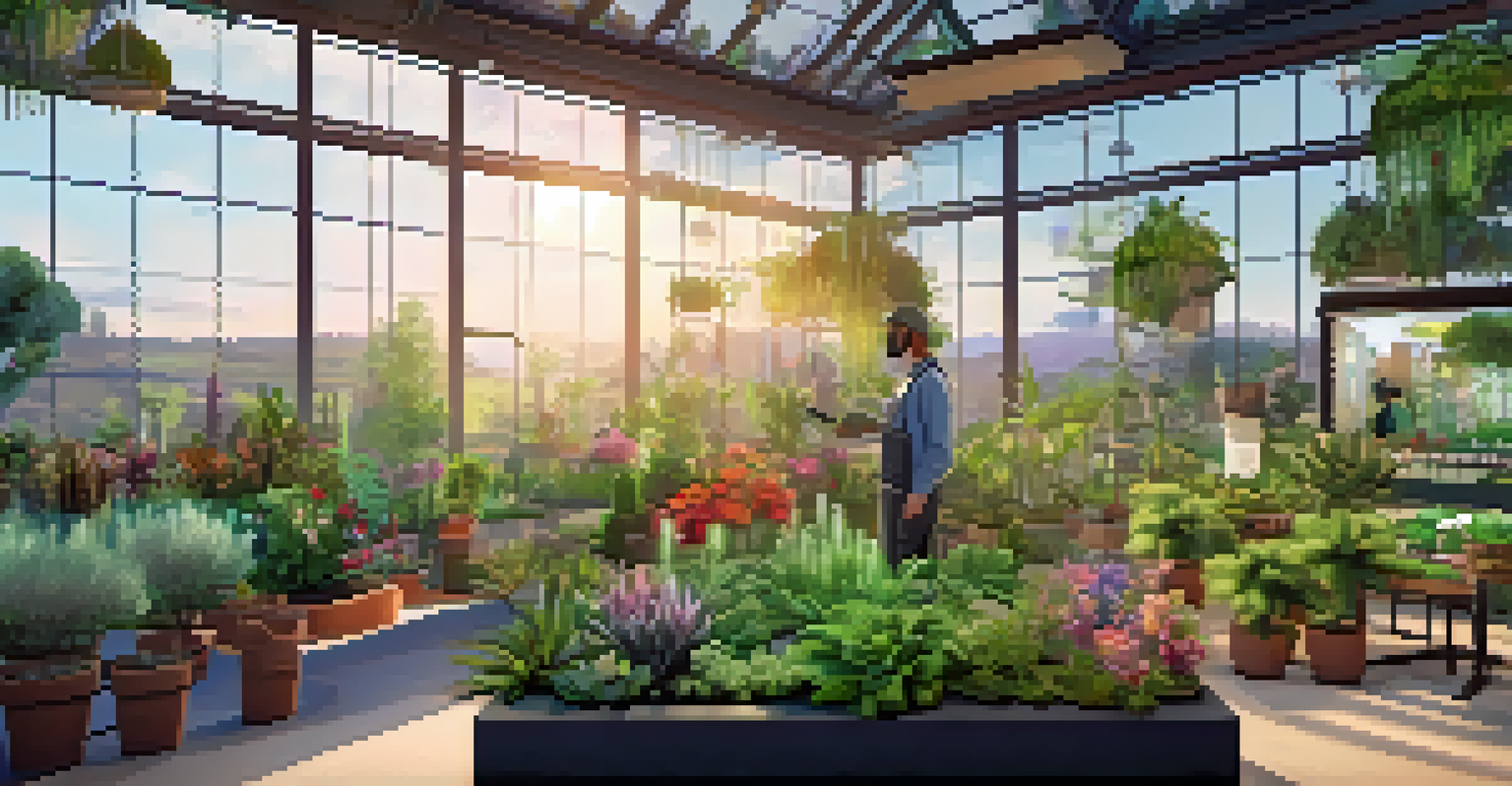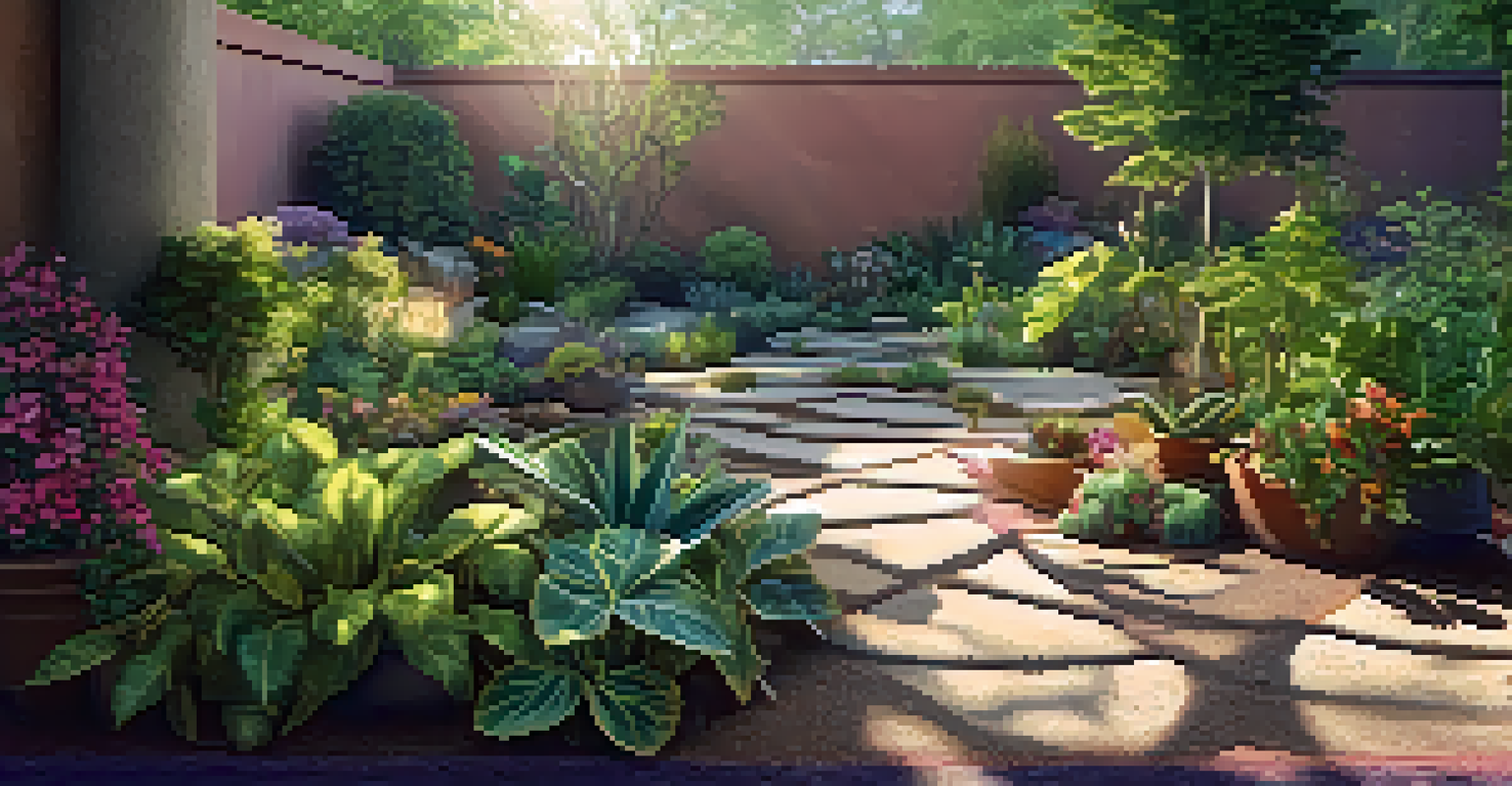Virtual Reality in Gardening: Immersive Design Experiences

What is Virtual Reality in Gardening Design?
Virtual reality (VR) is a technology that creates immersive environments, allowing users to experience spaces as if they were physically present. In gardening, VR enables designers and gardeners to visualize landscapes and plants in a fully interactive way. This revolutionary approach helps to bridge the gap between imagination and reality, making gardening design more accessible and engaging.
The only limit to our realization of tomorrow will be our doubts of today.
Imagine being able to walk through a garden before it is even planted, adjusting plant placements and colors on the fly. With VR, users can do just that—experimenting with various designs and layouts without any physical labor or expense. This level of interaction can significantly enhance the design process, as it allows for a hands-on experience that traditional methods simply can't provide.
Ultimately, VR in gardening design is about bringing ideas to life in a way that is both innovative and practical. It opens up a world of possibilities, enabling gardeners and designers to explore new concepts and create stunning outdoor spaces that reflect their unique vision.
Benefits of Using VR for Garden Planning
One of the key benefits of using virtual reality in garden planning is the opportunity for experimentation. Gardeners can try out different plant combinations, colors, and layouts in real-time, allowing for a trial-and-error process that is rich with exploration. This flexibility helps to foster creativity, as users can visualize their ideas without the constraints of physical limitations.

Additionally, VR provides a platform for collaboration. Designers and clients can meet in a virtual space, discussing and modifying designs together. This can streamline communication and ensure that everyone’s vision aligns before any actual planting begins, saving time and reducing misunderstandings.
Immersive Design with VR
Virtual reality allows gardeners to visualize and experiment with landscapes in an interactive and immersive environment.
Another significant advantage is the ability to foresee challenges in a garden design. By walking through the virtual space, users can identify potential issues such as sunlight exposure or water drainage. This foresight can lead to more informed decisions, resulting in healthier plants and a more sustainable garden.
How VR Enhances the Learning Process for Gardeners
Virtual reality offers a unique educational tool for aspiring gardeners. Through immersive experiences, learners can explore various gardening techniques, understand plant care, and even visualize the lifecycle of plants. This hands-on approach can lead to deeper understanding and retention of knowledge compared to traditional learning methods.
Innovation distinguishes between a leader and a follower.
For instance, a user can experience the growth of a plant from seed to harvest in a virtual garden, witnessing the impact of different conditions on its development. Such insights help gardeners appreciate the nuances of plant care and the importance of environmental factors. This experiential learning can translate into more successful gardening practices in the real world.
Moreover, VR can be especially beneficial for individuals with limited access to traditional gardening resources. By providing a virtual space to learn and practice, users from diverse backgrounds can cultivate their gardening skills, fostering a more inclusive community of gardeners.
Creating Realistic Virtual Garden Environments
One of the most impressive aspects of virtual reality in gardening is the ability to create hyper-realistic environments. Advanced rendering technology allows for the detailed depiction of plants, soil, and landscapes, making virtual gardens look strikingly similar to real ones. This precision helps users feel more connected to the designs they create.
Textures, colors, and even the sounds of nature can be incorporated into these virtual environments, enriching the immersive experience. Users can hear the rustling of leaves or the sound of water trickling, which makes the virtual gardening experience even more lifelike. This sensory engagement helps to enhance creativity and emotional connection to the garden.
Enhanced Learning Opportunities
VR provides a hands-on educational tool for gardeners to explore techniques and plant care in a more engaging manner.
Furthermore, these realistic environments allow for comprehensive design reviews. Gardeners can take virtual tours of their creations, assessing the aesthetics and functionality of their designs from various angles. This level of detail can lead to more informed design choices and ultimately, a more satisfying gardening experience.
Integrating Augmented Reality with Virtual Gardening
While virtual reality immerses users in a fully digital world, augmented reality (AR) enhances the real world with digital elements. Combining VR and AR in gardening can provide a powerful tool for design and education. For example, AR can overlay digital plant designs onto a physical garden space, giving users a clear idea of how their selections will look in reality.
This integration allows for immediate visual feedback, making it easier for gardeners to make decisions on-the-spot. Users can simply point their device at a garden area to see how different plants would fit into their existing landscape. This seamless blend of technology brings an added layer of convenience and creativity to the gardening process.
Moreover, AR can also serve as an educational resource, offering real-time information about plants and gardening techniques as users interact with their actual garden. This combination of VR and AR encourages a more dynamic and interactive gardening experience, catering to both novice and experienced gardeners alike.
The Future of Virtual Reality in Gardening Design
As technology continues to evolve, the possibilities for virtual reality in gardening design are expanding. We can expect more user-friendly platforms that make creating immersive garden experiences accessible to everyone, from hobbyists to professional designers. As these tools become more affordable and widespread, we may see a surge in innovative gardening practices.
Additionally, advancements in VR hardware, like lighter headsets and improved graphics, will enhance the user experience, making virtual gardening even more engaging. Imagine being able to explore your dream garden with friends or family, regardless of their physical location, all within a virtual setting. This could lead to greater community involvement in gardening projects.
Future of Gardening Technology
The integration of VR and AR in gardening paves the way for innovative practices and greater community involvement.
Ultimately, the future of virtual reality in gardening design holds great promise. It not only has the potential to transform how we design and interact with gardens but also to inspire a new generation of gardeners who embrace technology as a vital tool for creativity and sustainability.
Conclusion: Embracing Technology for Gardening Success
Virtual reality is revolutionizing the gardening landscape by offering immersive design experiences that were previously unimaginable. This innovative approach allows users to experiment, learn, and collaborate in ways that enhance their gardening journey. By integrating VR into gardening practices, we can foster creativity and promote informed decision-making.
As we continue to explore the intersection of technology and horticulture, it’s essential to embrace these advancements. The blend of virtual reality and gardening not only enriches our understanding of design but also paves the way for more sustainable practices. By harnessing these tools, gardeners can cultivate beautiful and thriving spaces.

In conclusion, the future of gardening is bright, and technology like virtual reality is leading the way. Whether you're a seasoned gardener or just starting, consider how these immersive experiences can enhance your journey and help you achieve your gardening goals.